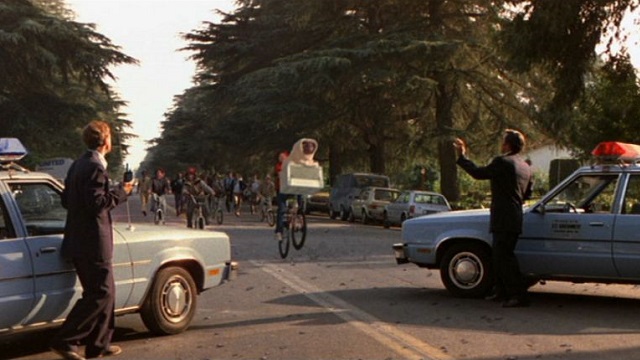This week, Michael Mann’s Ali is coming out with a third “director’s cut” of the movie, trying to align the 15 year old film with his current political vision of Mohammad Ali’s story. In an interview with Deadline, Mann gave this reason for his new version:
With the hindsight of history, I felt the drama didn’t get all the way there. It wasn’t as strong as it should have been.
Of course, this is with 15 additional years of hindsight, and the Michael Mann of 2016 is different than the Michael Mann of 2001. Heck, no matter how old we are, the us of 2016 is vastly different than the us of 2001.
Back in the early early days of Hollywood, movies would run into a variety of censor boards across the country and end up with multiple prints that each have some scene or other excised based on where the print was being shown. When it came time to remaster these films for preservation purposes, many film restoration experts had to track down lost prints and reassemble the films into their original states. The prime example of this would be Metropolis, where new footage was found in the past decade on a 16mm reel in Argentina.
In essence, the director’s cut is really about the rise of the auteur over the domination of the studio. Orson Welles was a director whose artistic visions were constantly sullied by studio meddling, and had his movies altered prior to their release. The Magnificent Ambersons is the most notorious example of this, with a preview rough cut that ran 135 minutes, and a final cut that ran 88 minutes with a completely changed ending. The studio even changed the score enough for Bernard Herrmann to remove his name from the film. That original footage is still lost. Welles would face the same struggle with Touch of Evil, which would also have modern attempts at restoration.
From the 1950s through the early 1970s, studios had roadshow presentations: theatrical presentations of movies in selected cities that featured longer versions of the movies. For instance, South Pacific had a roadshow version of about 3 hours, but in its general release was chopped to 2-and-a-half hours. Roadshow movies had limited runs with higher ticket prices and lower screenings per day than the general release movies did.
When the MPAA came into the picture, many movies had to cut their graphic footage to garner an R-Rating over an X or, later, an NC-17. Because of the rise of pornography that would wear its X-rating on its sleeve, the X-rating would be banned from advertising in papers and television in many markets, diminishing knowledge or access to the film. Because of the diminished returns, the MPAA was able to force studios and directors to release R-Rated edits based on MPAA suggestions.
And then came Spielberg. Close Encounters of the Third Kind was the first film to really have the vanity director’s cut. He had been running out of time and budget when the original movie was released in 1977. Because this was before the rise of home video, studios were used to re-releasing their successful films periodically to make even more money. After Close Encounters was successful, Spielberg asked the studio for money to add in more scenes, which would be incorporated into the re-release of the movie in 1980.
On home video, the directors cut and special editions flourished, especially post-1990. The 1990 “Director’s Cut” of Ridley Scott’s Blade Runner might not have been the first director’s cut or special edition to flout its differences from the original release, but it became a highly prominent one due to a well-trodden argument over studio interference with the theatrical cut.
Throughout the 1990s, directors cuts and special editions would become regular staples on VHS due to its lowered stakes. On home video, studios didn’t have to worry about the number of times a movie could be shown in a theater. Studios also didn’t have to worry about lost revenue due to diminished newspaper advertising caused by the NC-17 rating. From James Cameron’s The Abyss to Oliver Stone’s Natural Born Killers to Jason Goes to Hell, the Director’s Cut rose to prominence in the comfort of our own home.
Then George Lucas re-edited the original trilogy of Star Wars starting the wave of vanity edits of major releases. Vanity edits would see theatrical re-releases of movies as changed by their original directors to suit their present attitudes about film: Spielberg re-edited E.T. in 2002, Ridley Scott re-edited Alien in 2003, and had a final cut of Blade Runner in 2007. And these re-edits don’t count the fiddling happening on home video.
I shouldn’t and couldn’t forget the numerous cash grabs that are “Unrated” home video releases. I don’t mean the movies where the MPAA actually made the directors make cuts. I’m talking about raunchy comedies and horror movies that change one or two things from the theatrical R-rated edition and re-release it as having “NEW UNCENSORED FOOTAGE.”
Are there limitations to the changes directors should make to their original releases? Should we approach these as pure money grabs? Though sometimes the new edit has valid reasons for its existence, often these new releases deserve all the skepticism and derision we can give them.
I can almost hear George Lucas screaming “NOOOOOOOOOOOOO!!!” from here.


